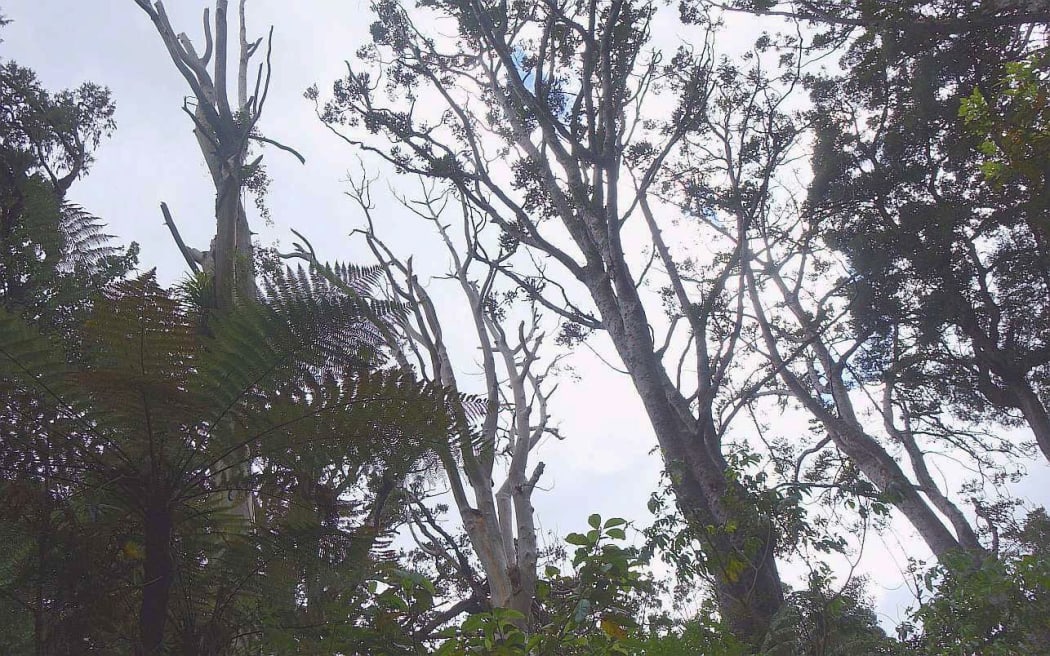The Ministry for Primary Industries denies there has been a lack of urgency over its programme to try to save one of New Zealand's most iconic trees.

MPI says it's doing what it can to save kauri. Photo: RNZ/Lois Williams
MPI has faced stinging criticism from some scientists and conservation groups over the robustness of its kauri dieback programme.
A lack of co-ordination, money spent on ineffective treatments, moving goal posts for scientific research, and a review that went nowhere are just some of the complaints raised about MPI's approach.
One scientist, Dr Amanda Black, who was commissioned by MPI to review its programme - said she reported back with a list of priorities two years ago - but there was no evidence any of it has been acted on.
MPI said that since 2014 about $3 million had been committed to research to help stop the spread of the disease, and about 70 percent of that had been spent so far.
Kauri dieback, for which there is yet no cure, continues to infect and kill.
It affects a fifth of kauri trees in the Waitakere Ranges, a scale that's doubled in the last five years. In some Northland forests, more than half of kauri trees are affected by dieback disease.
MPI's Manager of Recovery and Pest Management John Sanson told Nine to Noon as part of the $3m - 16 projects had been completed with another seven ongoing.
"There's always been a sense of urgency, this is an issue that people are very passionate and committed around ... and important to recognise that there's been a lot of good work done. The issue in terms of the Waitakere Ranges, I think it's actually more about people's behaviours when they're gong into that park area and using those trails."
He said in the early stages of the research programme they had to start from scratch.
"With no diagnostic tool available to us, very little understanding of the disease behaviour, how it impacted the tree ... we initially focussed on research to answer those critical questions. We were putting those building blocks in place early on."
He said the budget increase in 2014 was available for direct investment and that had allowed them to "start to tackle the next set of questions."
Mr Sanson said they had acted on a number of recommendations in the 2016 report.
"We welcomed that independent review and scrutiny ... there have been a number of the recommendations in that report that we have progressed and formed part of our current research programme."
"One of the key successes has been the development of phosphite injections and that was work that started prior to 2014 but has given us some really positive outcomes in terms of a tool that can be used to provide a layer of protection to trees. We've had work looking at biological controls ... we've been looking at utilising the latest remote-sensing technologies."
He said the Independent Technical Advisory Group had not disbanded, despite its last meeting being in 2015.
"We call together those Technical Advisory Groups when we need to do so but we also continue to have direct dialogue with scientists, have science focussed workshop sessions ... it's not the only thing we rely on to inform our research priorities."
He also responded to criticism of poor public awareness campaigns.
"We brought together focus groups, different user groups earlier on in developing that campaign, we tested it, it got feedback.
"The messages have been very clear from early on about what we were asking people to do. Our research has shown that there's been an increasing level of awareness of the issue unfortunately that just hasn't translated into people taking the right action."
He said the progress of the programme strategy was currently being reviewed as it had reached its three-year point.

